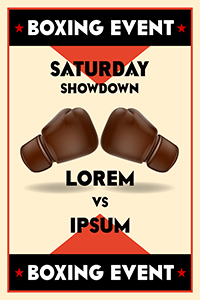Digital vs. Print, which one is the winner? - Liam Sammon
09 October 2015
 Anyone involved in teaching and learning resources, whether a user or a creator, would have at some point heard the debate between digital and print, with protagonists from both sides stating the case. If I was to distil all the debates I’ve engaged in into a single conversation it would probably look like this:
Anyone involved in teaching and learning resources, whether a user or a creator, would have at some point heard the debate between digital and print, with protagonists from both sides stating the case. If I was to distil all the debates I’ve engaged in into a single conversation it would probably look like this:
Print: “Textbooks are an established part of teaching practice, unlike digital they don’t have to explain their purpose”
Digital: “Digital is already established with young learners - they get it, they use it, and they don’t need it explained.”
Print: “Textbooks give a single view of the curriculum, encouraging consistency of teaching approaches.”
Digital: “Digital allows for multiple views and multiple approaches, which is the route to personalised learning.”
Print: “Textbooks enable deep learning. Research demonstrates that print outperforms digital for reading comprehension”
Digital: “Digital gives you interactive and more engaging resources; you need to engage a learner before you can develop their comprehension.”
Print: “Textbooks give structure to both learning and teaching, with clear and consistent pathways.”
Digital: “So can digital, it’s all about design, and is linear teaching the only approach?”
Print: “Textbooks give clarity and consistency of purpose, reducing confusion over learning aims and assessment objectives. This builds confidence in teachers, particularly during periods of significant curriculum change.”
Digital: “So can digital, it’s all about design and confidence in who has created the resource”
Print: “Printed textbooks are un-editable; this removes the risk of content being changed incorrectly”
Digital: “Digital is editable so you can update it quickly and there are ways to quality control crowdsourced content”
I could go on and I haven’t mentioned learner analytics and the ‘connected world’ (the case for digital) or curriculum cohesion and textbooks as a policy instrument to ensure close alignment between the intended and the enacted curriculum (the case for print). So having listened and participated in this debate many times, who do I think is the winner?
1st prize goes to...
The Teacher
Whether digital or print, a teaching and learning resource is no substitute for good teaching, and equally it can’t compensate for bad teaching. This is neatly captured by the quote below from OECD’s recent report on students, computers and learning:
“Technology can amplify great teaching; but great technology cannot replace poor teaching”.
2nd prize goes to...
Good design - Structure and purpose
What good digital resources have in common with a textbook is structure (where are you going and where to go to next) and purpose (why are you doing this and what learning outcomes are you looking for).
Digital resources can learn from textbooks on this. For if you type GCSE Maths into YouTube you will get 52,000 results and whilst this search will yield some excellent resources (including our own), 52,000 resources is not presenting structure and purpose. Teachers will have to wade through this and work out how to use them correctly, which can create more confusion rather than build confidence.
Exam boards can play a part in sorting the wheat from the chaff, and giving structure and purpose. At OCR we’ve taken the first step of a ‘collate and curate’ digital resource service with our free Scheme of Work Builder for the new GCSEs and A Levels and the suggest or recommend a resource service, and we plan to add to this going forward.
I explore this theme of structure and purpose further at the Assignment Report’s seminar on “Changes in the learning support landscape” on the 15th October.
And commendation goes to...
Blended learning
With blended learning you can have the best of all worlds - efficient and targeted access to good teaching, utilise good print resources (what goes on in contact time), use of good digital resources online, and adopt different pedagogies. This is why we are working with education centres on blended learning services such as TiME for maths and English.
And finally
OCR will continue to work with suppliers of both print and digital resources, and we have adapted our endorsement process to support both types of resource; so why not take a look and put forward your resource to add to the debate.
About the author
 Liam Sammon - Director of Education and Commercial Services
Liam Sammon - Director of Education and Commercial Services
Liam is responsible for the support to the 7,000 education centres and 1.5 million candidates taking OCR qualifications every year. His remit covers the full spectrum of OCR’s support from promotion, preparing to teach, teaching and learning, and results. This includes marketing and communications, events, PR, sales, social media, OCR’s call centre, centre support in the field via OCR’s field force, teaching and learning resources, teacher training, and OCR’s website. He also leads on education technology for OCR, including OCR’s expanding range of technology enhanced learning services.